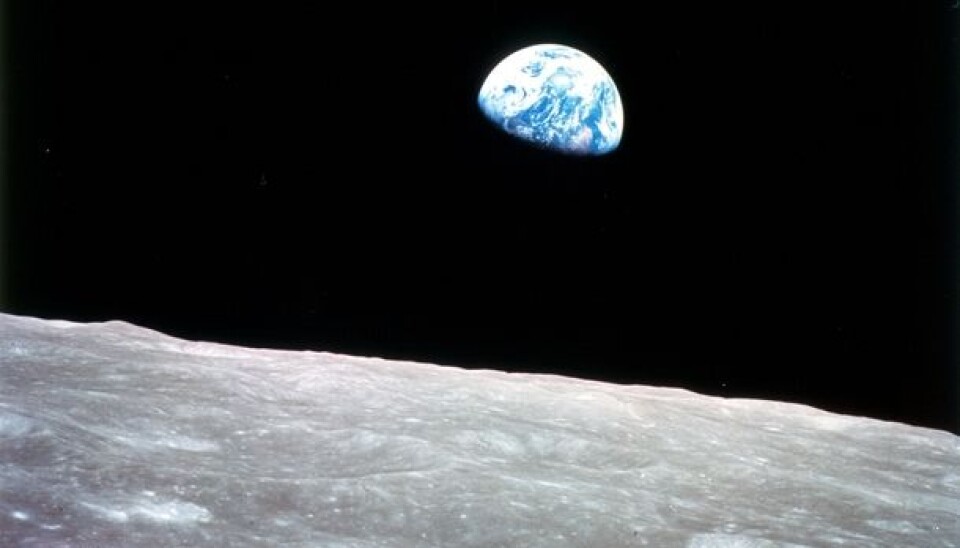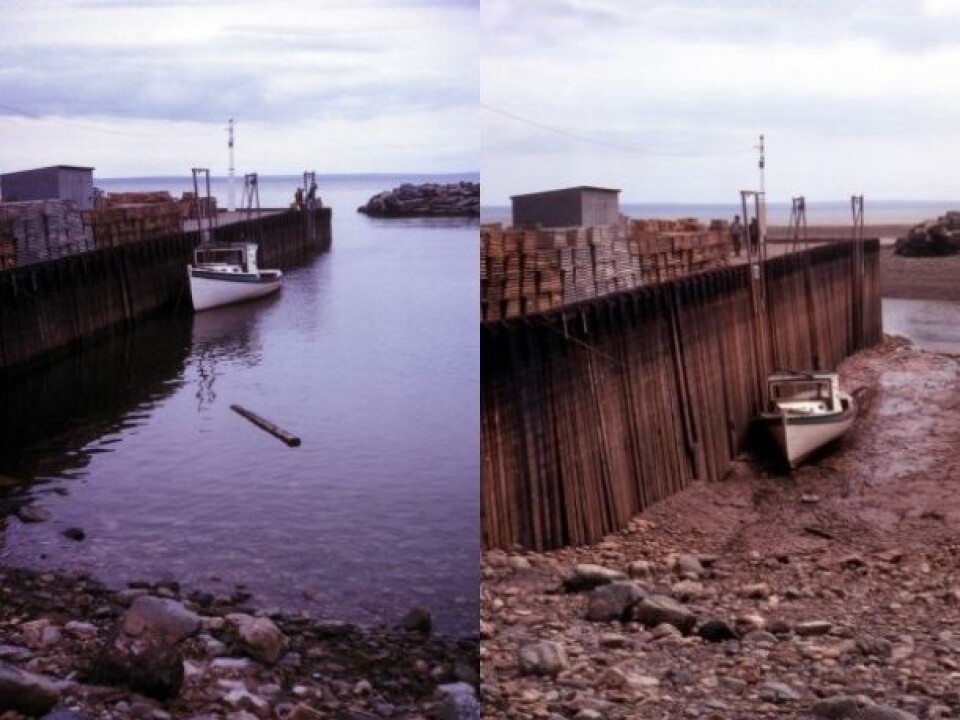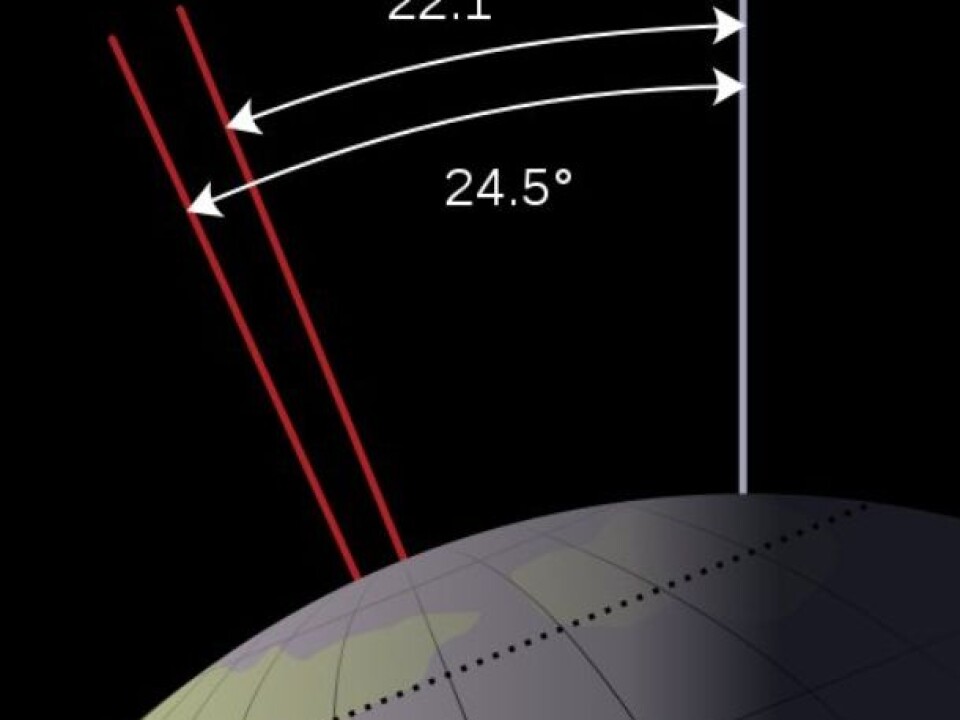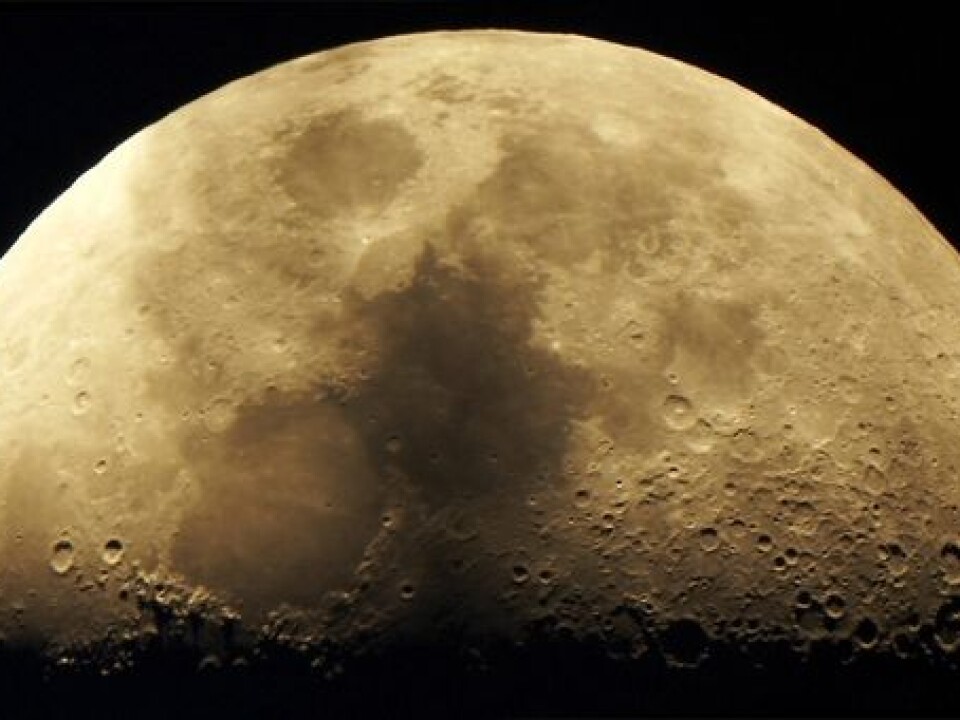
What would we do without the moon?
How would it be on Earth if the Moon had never existed? Would we be in trouble if our celestial satellite were to leave us?
Denne artikkelen er over ti år gammel og kan inneholde utdatert informasjon.
The question arose one evening after Christmas, fittingly beneath a nearly full Moon. What if this bright sphere we are so accustomed to in the sky just weren’t there? How would our planet get by without it?
A few consequences come immediately to mind: Neil Armstrong’s life would have been less exciting. Audrey Hepburn wouldn’t have sat on the stairs with a guitar and played “Moon River” in the movie Breakfast at Tiffany’s. And the myth of werewolves wouldn’t have existed – at least not in the form we know it today.
And of course it would be darker at night.
But what major outcome would it have on the Earth in general?

We contacted Kaare Aksnes, professor emeritus at the Institute for Theoretical Astrophysics at the University of Oslo for an answer.
“In short we would have less difference between high and low tides, shorter days and a more extreme climate,” he says.
Half the tides
Lunar gravitation is greater on the side of Earth facing the Moon than it is on the centre of our planet. And its gravitational attraction on the centre of the Earth is stronger than on the opposite side of our planet. This makes ocean water bulge outward on either side of the planet.

Because of the Earth’s rotation this gives us high tides twice a day, followed by low tides about 6 hours later.
“We would have less sustantial high and low tides without the Moon. However, there would still be tides, because the Sun also has a tidal effect, although it only amounts to about half that of the Moon,” explains Aksnes.
The Sun is much more massive, but also much further away than the Moon. Even though the Sun pulls on the oceans more than the Moon does, the difference between its pull on the front and back sides of the Earth is less than the case is with the Moon, and it’s this difference that determines the height of the tidal bulge.
Shorter workdays

The pulling of the seas toward the Moon not only affects seawater depths along the coasts. The Earth’s rotation is slowed down by what is called tidal friction.
The movement of the bulge of tidal water across the oceans and its attraction to the Moon acts as a brake on the Earth’s rotation. Slowly but surely the length of a day is increasing.
“We’re not talking about a heavy foot on the brake pedal – it amounts to about two seconds per 100,000 years. But on a cosmic scale 100,000 years is a fairly short time. So if the Moon didn’t exist, the Earth would be spinning much faster now and a day would be several hours shorter,” says Aksnes.
That would be great for those fighting for shorter workdays.

The Moon is our hammer
Perhaps the most important effect of the Moon is the way it stabilizes our rotation. When the Earth rotates it wobbles slightly back and forth on its axis. It’s like a top, which doesn’t simply spin in a vertical position on a table or the floor. But without the Moon we’d be wobbling much more.
“The relevant link between spin and orbit is very complicated, but in a simplified version you could think of it as being like an Olympic athlete in the hammer throw event,” says Terje Wahl, deputy director general of the Department of Space and Earth Sciences at the Norwegian Space Centre.
“When a hammer thrower spins around before letting go he could nearly be rotating on a pinpoint. But as soon as he releases the hammer he takes a couple of awkward steps and flails his arms to keep from falling down,” Wahl explains.

While there are some differences between the Earth-Moon system and the hammer thrower, one being that the hammer and the hammer thrower spin at the same speed, whereas the Earth and Moon don’t, the result is the same:
The Moon keeps the Earth from wobbling violently as it spins.
North Pole in Congo
“Without the Moon the tilt of the Earth’s axis would vary more, with potentially strong climatic effects,” says Aksnes.
With no moon as a stabilizer, the Earth would sometimes tilt all the way over and lie on its side in relation to its orbit around the Sun. This would make for extreme differences between temperatures and daylight throughout the year.
At other times the Earth’s axis would be straight up and down, making night and day equally long, year round, and there would be no seasons.
There would be periods with more extreme weather, and bigger differences between winter and summer.
"A good example of this is Mars, which has no large moon to stabilize it, so it tilts more. The Martian climate and atmosphere has undergone enormous changes in the past millions of years. We probably would see something similar to that here,” says Aksnes.
On Mars the axis tilts so much that the ice now found at its poles has sometimes moved all the way down to the equator. A similar scenario here, with large portions of Africa being covered in ice at intervals, would be rather inconvenient.
The Moon and the menstrual cycle are unrelated
For women it might seem like this issue has another dimension, because we, like the tides, are linked to a monthly cycle. Is the menstrual cycle really related to the Moon, or is their length just a coincidence? After all, the moon has a period.
Britt Ingjerd Nesheim is a professor and physician in obstetrics and gynaecology at the University of Oslo, and has a ready answer.
“There isn’t any connection between the menstrual cycle and the lunar cycle, it’s just a coincidence that they are about the same,” she says.
“Several studies have been made to check whether any of the myths about the Moon’s impact on us are correct. For instance it’s been believed for some time that more childbirths occur during a full Moon than otherwise, but it turns out this isn’t the case either.”
It isn’t all that long ago that insanity was thought to be linked to the Moon. It was pseudo-scientifically argued that since the brain consists of about 80 percent water, lunar phenomena would disturb the aquatic balance in our heads – just like with tides – hence causing lunacy.
Of course both sides of our heads are effectively the same distance from the Moon and the only thing loony here is the myth.
We could have evolved without the Moon
Our world would certainly be quite different if it had no large satellite. But apparently it would not be so radically different that its absence would necessarily prevent humans from ever seeing the light of day.
Another question is what would happen if the Moon were to suddenly decide to say goodbye. Would we survive that?
“Yes we would. Nothing too severe would happen because the Moon could never vanish instantaneously. It would slowly get further away and eventually leave us. But there’s nothing indicating that we’ll lose the Moon, so this is purely hypothetical,”Aksnes assures us.
The Moon actually is in the process of leaving us, at a rate of nearly four centimetres a year. Neither the oceanic tides nor the length of the day are particularly crucial to our survival, so the most important aspect of this separation is the way the changes in the Earth’s tilt would impact us.
“I would expect the Earth to still be habitable, even when considering large changes in the axis. The Earth can be compared to a spinning top. The force of its rotation makes it relatively stable. Despite losing the stabilizing Moon it would take a long time before the tilt of Earth’s axis changed much,” Aksnes points out.
“If for instance you look at the life expectancy of a civilization as a few thousand years, the changes would be so slowly paced that we could have time to adapt.”
If you are still nervous about what will happen eventually as the Moon orbits further and further away, you might find solace in the following: By the time any serious consequences could occur, the Sun will have become a red giant and will have consumed both the Earth and the Moon.
Problem solved.
-----------------------------------------------
Read the article in Norwegian at forskning.no
Translated by: Glenn Ostling






























